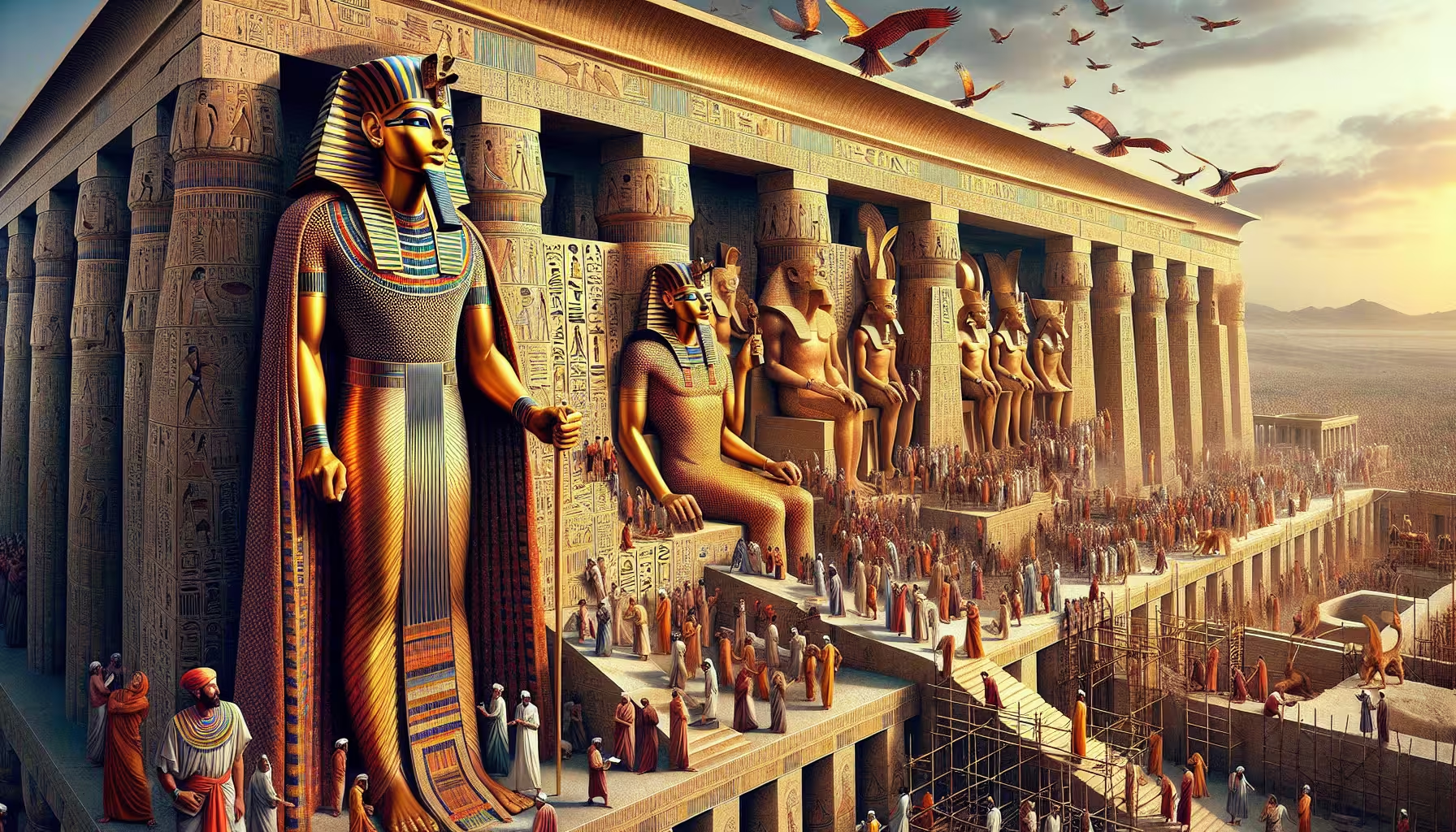
Amenhotep III was an ancient Egyptian pharaoh who reigned from 1386 to 1353 BC. He is considered to be one of the most significant pharaohs of the 18th dynasty, known for his ambitious building projects and diplomatic achievements. His most notable construction project was the Mortuary Temple of Amenhotep III, a massive and impressive structure dedicated to the pharaoh’s legacy and divine cult. The Mortuary Temple of Amenhotep III is an architectural marvel, featuring impressive columns, statues, and intricate relief carvings that display the wealth and power of the pharaoh. This temple was a key
Introduction
The Mortuary Temple of Amenhotep III is a magnificent structure located on the west bank of the Nile in Luxor, Egypt. It was constructed during the reign of Pharaoh Amenhotep III, who was one of the most powerful and influential pharaohs of the 18th dynasty. Amenhotep III ruled Egypt for nearly four decades, from around 1391 to 1353 BCE, and his reign was marked by great prosperity and cultural flourishing. He was known for his impressive building projects and the creation of numerous monuments and temples throughout Egypt. The construction of the Mortuary Temple of Amenhotep III was a grand undertaking and a testament to the pharaoh’s wealth and power. The temple complex was once one of the largest and most opulent in Egypt, featuring massive statues, grand pillars, and intricate carvings. Historically, the temple served as a place of worship and offerings to honor Amenhotep III in the afterlife. It was also a center of religious and administrative activity and played a significant role in the religious and political life of ancient Egypt. The importance of the Mortuary Temple of Amenhotep III is evident in its grandeur and scale, as well as its historical and cultural significance. Exploring this remarkable structure
Amenhotep III, an ancient Egyptian pharaoh, constructed the Mortuary Temple of Amenhotep III between 1386 and 1350 BCE. The temple was dedicated to the pharaoh and the god Amun, showcasing impressive statues and massive columns, making it one of the largest temples of its time.
Emperor Amenhotep III: The Magnificent Pharaoh of Ancient Egypt
In the heart of ancient Egypt, during the 18th dynasty, a magnificent pharaoh ruled the land with wisdom and grandeur. Amenhotep III, also known as Amenhotep the Magnificent, ascended to the throne at a young age and quickly established himself as a powerful and prosperous ruler. Under his reign, Egypt experienced a time of great wealth and artistic flourishing, as he commissioned the construction of numerous temples and monuments, including the grand mortuary temple that bears his name.
The Visionary Patron of Architecture and Art
Amenhotep III was a visionary patron of architecture and art, and his reign marked a period of unprecedented building activity in ancient Egypt. His mortuary temple, located on the west bank of the Nile River in Thebes, was an architectural masterpiece dedicated to the worship of the pharaoh as well as the gods and goddesses of ancient Egypt. The temple complex, with its impressive colonnades, statues, and reliefs, showcased the wealth and power of Amenhotep III and his enduring legacy as a divine ruler.
The Legacy of Amenhotep III and His Mortuary Temple
Although Amenhotep III’s mortuary temple has suffered the ravages of time and nature, its remnants continue to fascinate visitors and historians alike. The grandeur and opulence of the temple complex serve as a testament to the power and influence of Amenhotep III, and its intricate designs and hieroglyphic inscriptions offer valuable insights into the religious beliefs and artistic achievements of ancient Egypt. Today, the site stands as a lasting tribute to the legacy of one of Egypt’s most remarkable pharaohs, whose reign left an indelible mark on the history and culture of the ancient world.
Did you know that Amenhotep III, one of ancient Egypt’s most powerful pharaohs, constructed the Mortuary Temple of Amenhotep III in the ancient city of Thebes? This temple was an impressive and grand structure dedicated to the pharaoh’s cult after his death. It featured massive statues, intricate carvings, and vast courtyards. The temple was a symbol of Amenhotep III’s wealth and power, and it served as a place for religious ceremonies and offerings to honor the deceased pharaoh. Today, the ruins of the Mortuary Temple of Amenhotep III stand as a testament to the incredible architectural
Read more:
amenhotep-iii-the-magnificent-pharaoh-from-thebesamenhotep-iii-scholar-warrior-renaissance-king
amenhotep-iiis-colossal-memnon-statues-commissioned
amenhotep-iii-signs-peace-treaty-with-hittites
the-golden-age-of-amenhotep-iii